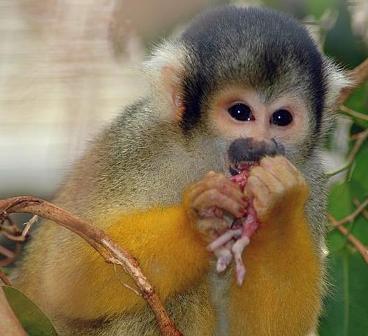


|
Anthropoidea(Haplorrhini):
The haplorrhines, the "dry-nosed" primates (the Greek name means "simple-nosed"), are members of the Haplorrhini clade: the prosimian tarsiers and all of the true simians (the monkeys and the apes, including humans). The omomyids are an extinct group of prosimians, believed to be more closely related to the tarsiers than to any strepsirrhines, and are considered the most primitive haplorrhines.
Haplorrhines are considered to be less primitive than the strepsirrhine "wet-nosed" primates (whose Greek name means "curved nose"), the other suborder of primates. Their upper lip is not directly connected to their nose or gum, allowing a large range of facial expressions. Their brain to body ratio is significantly greater than the strepsirrhines, and their primary sense is vision. Most species are diurnal (the exceptions being the tarsiers and the night monkeys) and have trichromatic color vision. Their hands and feet are more generally adapted, with specialization only for locomotion, such as the hooked hands common to gibbons and orangutans, or the human bipedal feet. All of the simians have a single chambered uterus; tarsiers have a bicornate uterus like the strepsirrhines. Most species have single births, although twins and triplets are common for marmosets and tamarins. Despite similar gestation periods, haplorrhine newborns are relatively much larger than strepsirrhine newborns, but have a longer dependence period on their mother. This difference in size and dependence is credited to the increased complexity of their behavior and natural history.
|
